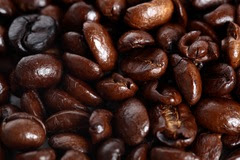When I started roasting coffee about six years ago, one of
the things that drew me to this passion was the wonder of single origin
coffees. I began my exploration, as most
coffee lovers do, by learning about the main growing regions of the world
(Central and South America, Africa and Indonesia), and then, through
experimenting with the broad range of coffees offered by the homeroasting
suppliers, I dug deeper to learn about coffees from individual countries and
the regions within each of these. And there I found an endless journey through
flavors and aromas and stories and processing methods that is what motivates my
love of coffee today.
To give you a sense of how massive this universe of coffees
can be, have a look at today’s offering list from one of the importers I use – featuring 339 different coffees. Click on the little symbols next to some of
these to learn more about where these were grown and their flavor profiles.
When these coffees make their way to roasters, they have one
of two destinies. Some will be used for
blends (such as our Indo Limbo French Roast or Espresso Nirvana), while others
will be sold as unblended “single origin” coffees. Our current offerings from Brazil, Ethiopia,
Guatemala and Sumatra are examples of these.
In looking around at where coffee is sold, you’ll see that
most of what is out there for mass consumption (grocery stores, café chains,
donut shops, restaurants, gas stations, etc.) are blends. These are coffee products where the maker
wants you to get used to a brand identity (Sunrise Blend, Dark Magic, Winter
Warmer) and be confident that you will always be getting the same product wherever
or whenever you buy it. (You are not, by the way, getting the same
product. Blends are one of the dirty
little secrets of the coffee world, with large-scale roasters gaming the
international markets to find low cost “blender” coffees, then enhancing these
with better coffees and roasting styles that give these products their
identities.)
Single origin coffees are the realm of smaller
roasters. We buy these great coffees in
relatively small quantities, roast and sell them until they are gone, and then
move on to another set of offerings. We
take chances to do this. In a world of
blends, the typical consumer doesn’t know much about growing regions, much less
about the differences between Ethiopian coffees from the Harrar, Sidamo and
Yirgacheffe growing regions.
In large grocery chains, you’ll encounter just a few coffees
designated by a country of origin (typically Sumatra, Columbia and Brazil), but
rarely if ever will you see information about regions within a country or
specific farms. Single origin coffees
are more easily found in health food stores, independent cafés, farmers markets
or roaster websites.
I think single origin coffees are a good thing. They promote knowledge of the sources of
coffee, enhance the range of flavors available to the consumer and encourage
farmers to grow better coffee. I wish we
as an industry had more ways to sell them, and that more roasters and retailers
would make the extra effort to offer them.
Unfortunately, I fear that trends are moving in the opposite
direction. When we travel – and when I
go to any store that sells coffee – I look at menus and retail offerings to see
what is available. In doing this, I have
always appreciated the commitment of small cafés and roasters to single origin
coffees. These require more consumer
education and more dialog with customers about the nuances of specific coffees
and how they are different than what someone may have drank the day before. But this year, for the first time, I have
seen significant numbers of small coffee businesses moving away from single
origin coffees and into menus comprised of only blends.
My guess is that these changes are the result of business
decisions about what works and what doesn’t work for each of these
companies. Many coffee drinkers care
mainly about getting a good, consistent cup at whatever roast level they prefer
supplied in a way that is convenient to where they live or work. To understand and appreciate single origin
coffees requires more commitment on the part of all concerned – roasters and
retailers need to spend more time on education, and consumers need to spend
more time savoring their coffee so that they see a reason to seek out these
special beans.
We will keep offering both families of coffee, as our customers
break down pretty evenly into blend lovers (Espresso Nirvana, Road Trip! and
Indo Limbo French Roast) and those who surf our single origin offerings from
Brazil, Guatemala, Ethiopia, Sumatra and others.
To each, his or her own.




